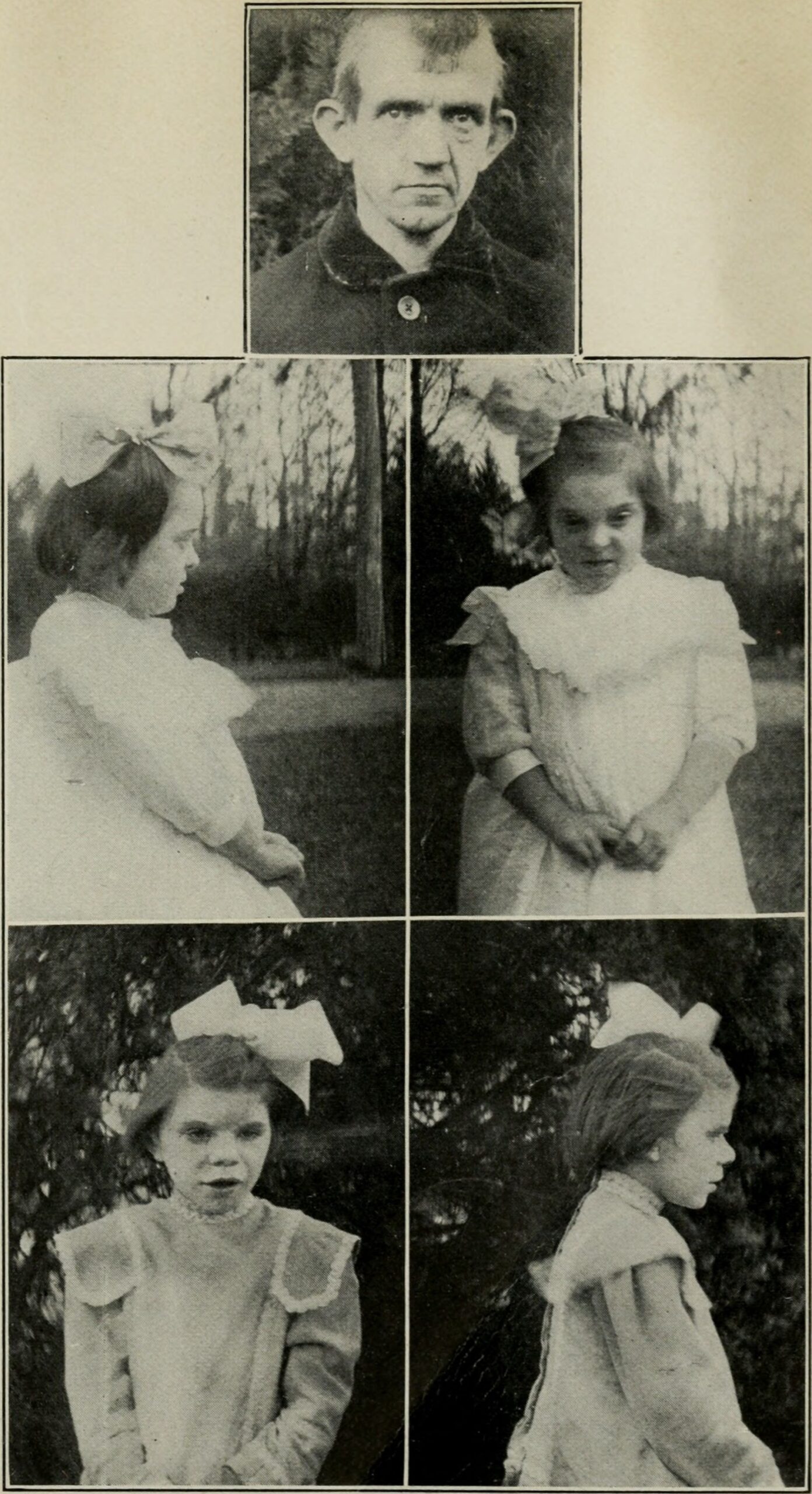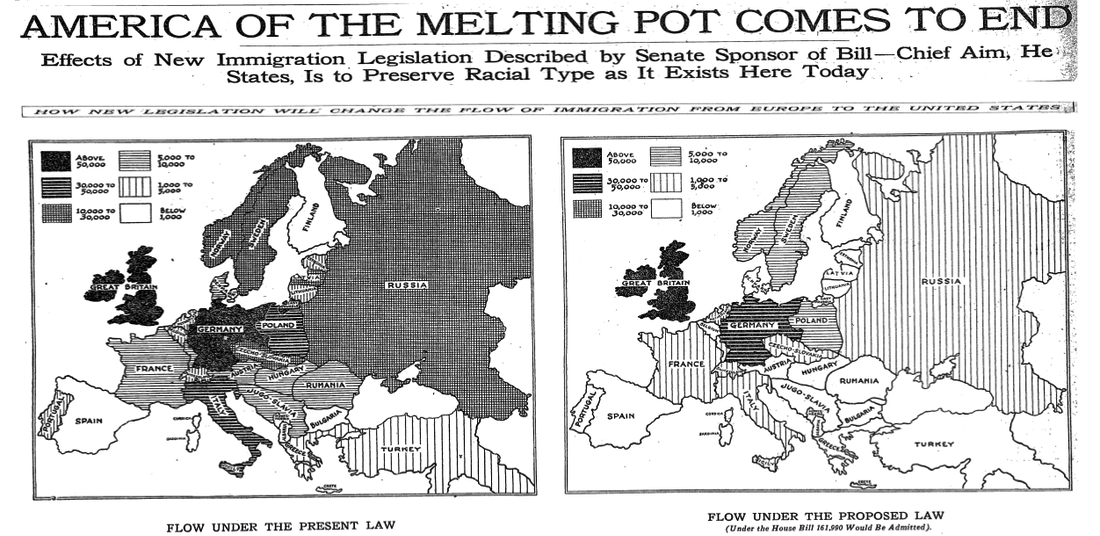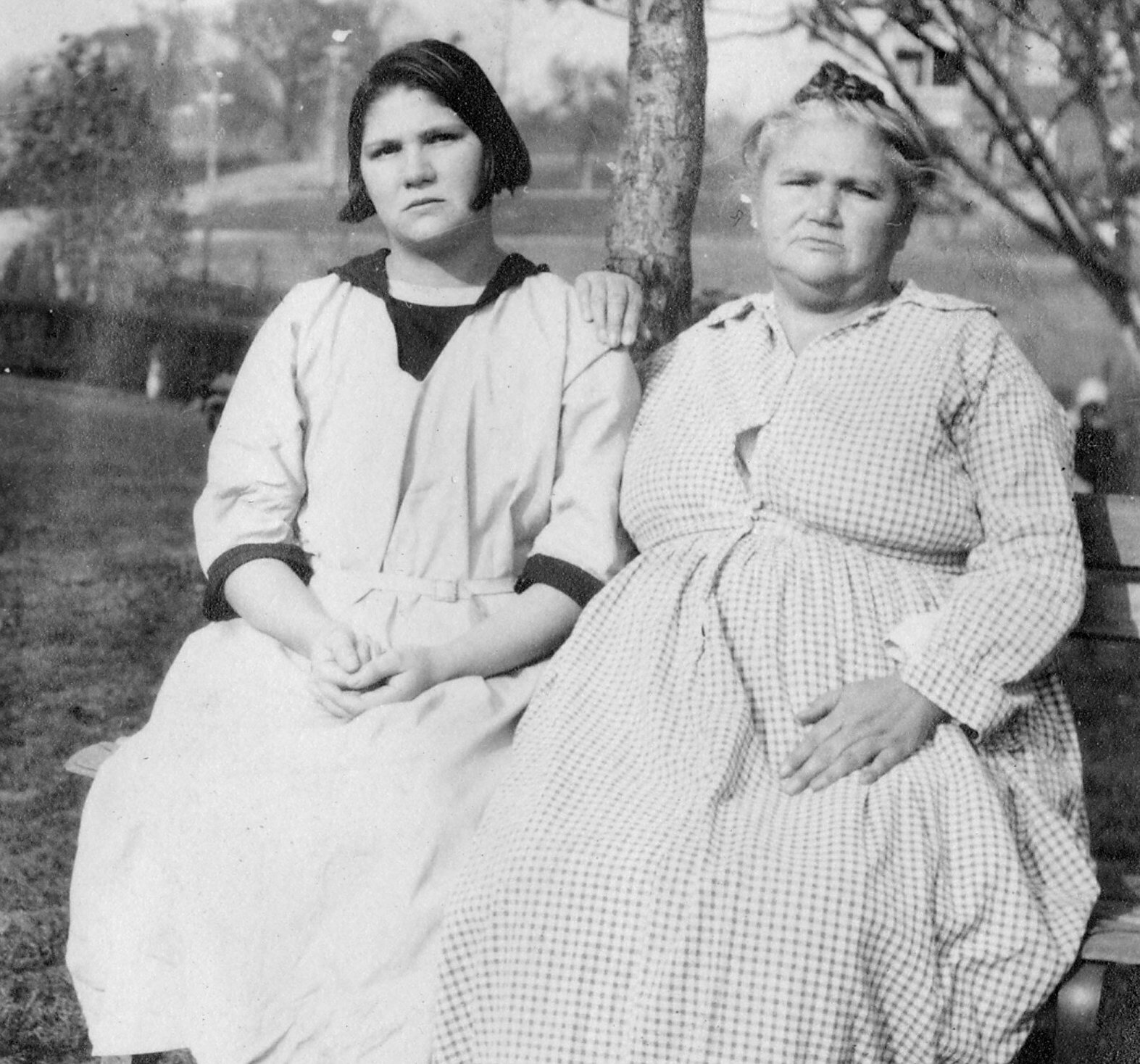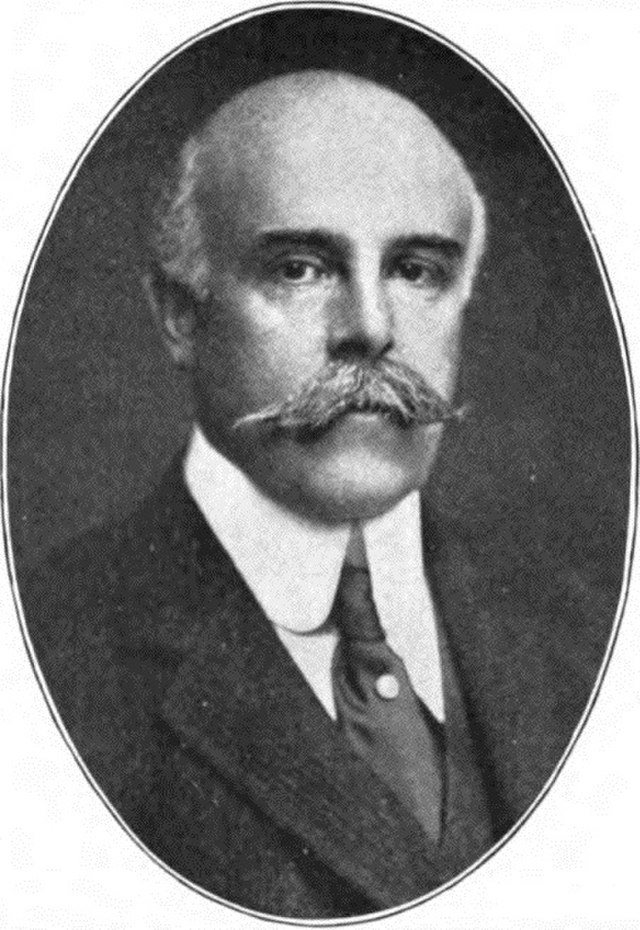Eugenics in America
The World War II isolationist movement in the United States was marked by a strong sentiment among various groups, including religious organizations, advocating for non-involvement in the escalating global conflict. Despite being aware of the Holocaust and the atrocities committed against Jews in Europe, many churches and conservative factions sought to convince Americans that staying out of the war was paramount to preserving national interests. Notable among these groups were the America First Committee and the Mother's Movement, which argued that involvement in the war would lead to unnecessary sacrifices. Today, echoes of this isolationist rhetoric can be seen in contemporary organizations like Moms for Liberty, which controversially includes quotes from Hitler in their newsletters, drawing unsettling parallels between past and present ideologies regarding governance and civic responsibility.
The Nazis were inspired by Jim Crow laws, and used them to craft legal discrimination like the Nuremberg Laws, which laid the groundwork for the persecution of Jewish people during the Holocaust and World War II.
The Nazi Party had always promised that, if they came to power, only racially pure Germans would be allowed to hold German citizenship. The Reich Citizenship Law made this a reality. This law defined a citizen as a person who is “of German or related blood.” This meant that Jews, defined as a separate race, could not be full citizens of Germany. They had no political rights.
The Law for the Protection of German Blood and German Honor was a law against what the Nazis viewed as race-mixing or “race defilement” (“Rassenschande”). It banned future intermarriages and sexual relations between Jews and people “of German or related blood.” The Nazis believed that such relationships were dangerous because they led to “mixed race” children. According to the Nazis, these children and their descendants undermined the purity of the German race.
While initially focused on Jews, the Nazi government clarified that the Nuremberg Laws also applied to Roma (also called Gypsies), Black people, and their descendants. They could not be full citizens of Germany. Nor could they marry or have sexual relations with “people of German or related blood.”

Sterilization in the United States and the Creation of Border Security
Indiana’s 1907 Eugenics Law, the first in the U.S., authorized a forced sterilization program “to prevent procreation of confirmed criminals, idiots, imbeciles and rapists” in state institutions. Sharp promoted it nationally as a model policy. Twelve states enacted similar laws by 1913. Approximately 2,500 Hoosiers were sterilized before the practice ceased in 1974.

The "Unfit"
The American eugenics movement received extensive funding from various corporate foundations including the Carnegie Institution, Rockefeller Foundation, and the Harriman railroad fortune., J.H. Kellogg (yes, like the cereal) provided funding to help found the Race Betterment Foundation in Battle Creek, Michigan.
The Eugenics Record Office (ERO) was founded in Cold Spring Harbor, New York in 1911 by the renowned biologist Charles B. Davenport, using money from both the Harriman railroad fortune and the Carnegie Institution. As late as the 1920s, the ERO was one of the leading organizations in the American eugenics movement. In years to come, the ERO and the American Eugenics Society collected a mass of family pedigrees and provided training for eugenics field workers who were sent to analyze individuals at various institutions, such as mental hospitals and orphanage institutions, across the United States.
Eugenicists such as Davenport, the psychologist Henry H. Goddard, Harry H. Laughlin, and the conservationist Madison Grant (all of whom were well-respected during their time) began to lobby for various solutions to the problem of the "unfit." Davenport favored immigration restriction and sterilization as primary methods; Goddard favored segregation in his The Kallikak Family; Grant favored all of the above and more, even entertaining the idea of extermination.

Under Goddard's test, 40% of Jews, Italians, and Hungarians tested qualified as morons. They deported people for "feeble mindedness”
In 1913, Goddard was involved in the introduction of IQ tests for immigrants passing into the United States through Ellis Island, which resulted in a large number of immigrants being deported. (This resulted in many Jews who wanted to immigrate to the United States to be deported, and later killed during the holocaust)
A 1917 congress immigration law required immigrants over 16 to pass a literacy test, increased taxes on arriving immigrants, and allowed immigration officials to exercise more discretion when deciding who to reject.
Harry Laughlin published "Eugenical Sterilization in the United States" which compiled every sterilization law ever passed in the United States
Laughlin provided extensive statistical testimony to the United States Congress in support of the Johnson-Reed Immigration Act of 1924. Part of his testimony dealt with "excessive" insanity among immigrants from southern Europe and eastern Europe. He also argued that most Jews were born feeble-minded.
The Johnson-Reed Act authorized the creation of the country’s first border control service, the U.S. Border Patrol. In addition to banning Jews, it also banned Asian Immigrants.
According to the Department of State, the purpose of the act was "to preserve the ideal of U.S. homogeneity." The 1924 act would define U.S. immigration policy for nearly three decades, until being substantially revised by the Immigration and Nationality Act of 1952 and ultimately replaced by the Immigration and Nationality Act of 1965, which formally removed de facto discrimination against Southern and Eastern Europeans as well as Asians, in addition to other non-Western and Northern European ethnicities from the immigration policy of the United States.

CASE 264. HENRY C. 38 years old. Mentality 7. Has been here 20 years. American born, of German parents. Has had spasms, whooping- cough, scarlet fever at the age of twelve, typhomalarial fever at twenty. CASE 260. DORA N. Io years of age. Mentality about 3. Has been here 2 years. American born, German parents. Had chicken-pox at the age of four, had measles and scarlet fever at six. CASE 268. DOTTIE I. (“Billikens"). 9 years old. Mentality 5. Has been here 4 years. American born, of Irish parentage. Has had whooping- cough. Drunkenness of the parents is the assigned cause of the condition. Billikens' case has already been described, see The Training School Bulletin for November, 1912.

New York Times headline announcing "America of the melting pot comes to end," with before and after map of immigration quotas from Europe, showing preference for immigration from Germany and the United Kingdom
The Sterilization of Carrie Buck - Buck v. Bell
In 1927,Carrie Buck, who was a teen mom who gave birth at the age of 14, was sterilized. She was raped by her foster family's nephew but they labeled her an imbecile and dropped her off at the same facility that held her birth mother.
In the reading of Buck v. Bell, Justice Oliver Wendell Holmes said, "We have seen more than once that the public welfare may call upon the best citizens for their lives. It would be strange if it could not call upon those who already sap the strength of the State for these lesser sacrifices, often not felt to be such by those concerned, in order to prevent our being swamped with incompetence. It is better for all the world, if instead of waiting to execute degenerate offspring for crime, or to let them starve for their imbecility, society can prevent those who are manifestly unfit from continuing their kind. The principle that sustains compulsory vaccination is broad enough to cover cutting the Fallopian tubes. [...] Three generations of imbeciles are enough.”
Even though both Carrie and her child were found to be of average intelligence afterwards, she was the first of thousands of people involuntarily sterilized under Virginia's Eugenics laws. His example went to shape the Nazi party's 1934 racial hygiene law. About 6000 sterilizations happened in the US until Buck v. Bell.

Carrie and Emma Buck - Arthur Estabrook, Public domain, via Wikimedia Commons
The Marital Health Law of October 1935 banned unions between the “hereditarily healthy” and persons deemed genetically unfit. Getting married and having children became a national duty for the “racially fit.” In a speech on September 8, 1934, Hitler proclaimed: “In my state, the mother is the most important citizen.”
Eugenicists had expressed concerns about the effects of alcohol, tobacco, and syphilis. The Nazi regime sponsored research, undertook public education campaigns, and enacted laws that together aimed at eliminating “genetic poisons” linked to birth defects and genetic damage to later generations. In 1936 the Reich Central Office for Combating Homosexuality and Abortion was established to step up efforts to prevent acts that obstructed reproduction. In a 1937 speech linking homosexuality to a falling birth rate, German police chief Heinrich Himmler stated: “A people of good race which has too few children has a one-way ticket to the grave.”
By the end of the 1930s, over 30,000 Americans had been involuntarily sterilized.
The temptation to forget that difficult lesson is still with us. It’s worth remembering that the Jews were not rescued from Hitler's death camps by obsessing over the failings of free nations. Now, as then, imperfect democracies are called upon to combat anti-Semitism and all ideologies of hate—because they are the only democracies available for the job.
The great depression shifted the conversation that poverty is biological and focused on a more moralistic critique focused on a person's fitness to parent, not just to physically reproduce. This was used as a way to “save state money” in institutional care for the social, physically, and mentally unfit. The economic benefit of sterilization and abortion was a way for women to control their fertility in the midst of economic devastation.
Proponents of selective growth did not tout abortion as a solution to the nation's problems, relying instead on birth control and sterilization to shape the population along lines suitable to the white elite power structure. Many women took advantage of the newly eased restrictions on birth control to suit their own purposes, namely, to limit their family size. This climate of growing acceptance spurred the establishment of birth control clinics.
There was eugenics based language in the movement to provide women with legal access to contraception ( Griswold v. Connecticut in 1965)
Eugenics, Contraception, and Margaret Sanger
Margaret Sanger and Planned Parenthood
Planned Parenthood's founder, Margaret Sanger, believed in eugenics. She aligned herself with ableist and white supremacist organizations in her mission to provide birth control for all, and originally focused on black communities.
In 2020, Planned Parenthood disavowed Sanger, citing her past record with eugenics and racism.
The Birth Control Federation of America and the Negro Project
From 1939 to 1942, Sanger was an honorary delegate of the Birth Control Federation of America, which included a supervisory role—alongside Mary Lasker and Clarence Gamble—in the Negro Project, an effort to deliver information about birth control to poor Black people. Sanger advised Gamble on the utility of hiring a Black physician for the Negro Project. She also advised him on the importance of reaching out to Black ministers, writing
The ministers work is also important and also he should be trained, perhaps by the [Birth Control] Federation [of America] as to our ideals and the goal that we hope to reach. We do not want word to go out that we want to exterminate the Negro population and the minister is the man who can straighten out that idea if it ever occurs to any of their more rebellious members.
New York University's Margaret Sanger Papers Project says that though the letter would have been meant to avoid the mistaken notion that the Negro Project was a racist campaign, detractors of Sanger, such as Angela Davis, have interpreted the passage "as evidence that she led a calculated effort to reduce the Black population against its will". Others, such as Charles Valenza, state that this notion is based on a misreading of Sanger's words. He believes that Sanger wanted to overcome the fear of some black people that birth control was "the white man's way of reducing the black population".

Between the 1930s and the 1970s, 37% of Puerto Rican women of childbearing age were sterilized
In the early 1970s, obstetricians in California working in federally funded family planning programs sterilized immigrant mexican women without their consent, often when getting C-sections
Eugenics in North Carolina - The Human Betterment League
In the 1940s, Dr Clarence Gamble (Procter & Gamble) launched a sterilization campaign through his nonprofit Birthright in North Carolina called the Human Betterment League - this continued well into the 1970s.
Weinberger v Relf was the case that ultimately exposed thousands of sterilization procedures that did not involve consent, the majority of which involved African American Women.
Minnie Lee and Mary Alice Relf (who were 12 and 14 years old in 1973, respectively) are two African-American sisters who were involuntarily sterilized by tubal ligation by a federally funded family planning clinic in Montgomery, Alabama in 1973. News coverage of a class-action lawsuit filed by the Southern Poverty Law Center brought U.S. government-funded sterilization abuse to the national spotlight.

Madison Grant - The Passing of the Great Race
Madison Grant in his book "The Passing of the Great Race", talks about the nordic race who are "blond haired blue eyed" . Hitler read this book when he was in jail and wrote a fan letter to Madison Grant and called the book his "Bible"
This book has been quoted in Congressional Record during discussions of immigration policy.
The book continued to influence the white supremacist movement in the United States in the early 21st century. The book was also the earliest emergence of the white genocide conspiracy theory as The Passing of the Great Race specifically focuses on the "race suicide" of Nordics.

Madison Grant - Not stated, Public domain, via Wikimedia Commons
The Comstock Act - Prevent Birth Control Pamphlets in the Mail
Alliance for Hippocratic Medicine vs FDA
The Supreme Court, in this supreme court case about the legality of mifeprestone, left its key argument open: the Comstock Act of 1873 prohibits the transport of obscene materials, including anything related to abortion, via mail. This law emerged from one man's mission to promote procreation among white Protestant Americans in response to rising immigration.
It was also used to prevent Margaret Sanger, the founder of Planned Parenthood, from publishing and mailing birth control pamphlets and books.
Stop promoting or approving mail-order abortions in violation of long-standing federal laws that prohibit the mailing and interstate carriage of abortion drugs. (p. 459)
Project 2025 cites 18 US Code 1461 as its source for defending this statement. A quick search shows that this is a section dedicated to the Comstock Act. Project 2025 wanted to ensure that women could not receive abortion care through the mail, but thankfully the supreme court struck it down.
